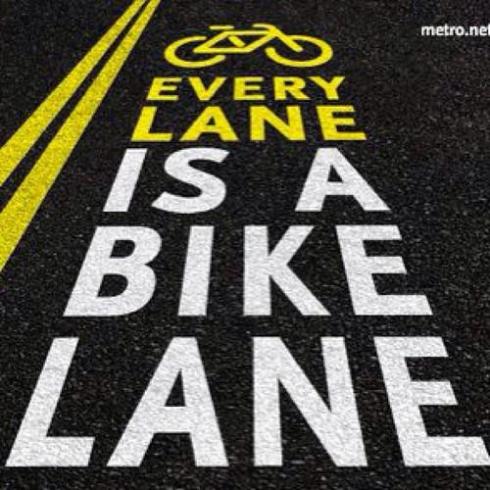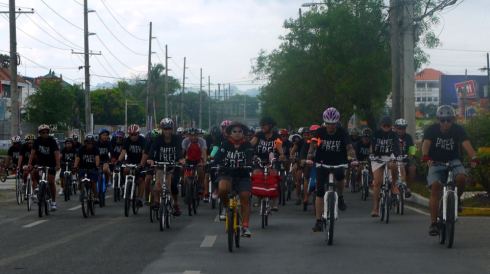Eight years ago I started a routine of biking after a dear friend gave me a standard mountain bike which she won from a Christmas raffle in her workplace. I transported the unit from Manila to Iloilo and started to bike my way from my house to the office.
The bike as a transport facility has a rich history. It has evolved from its humble beginning to become one of the most technologically advanced non-motorized transport unit in the world today. The modern bike is a display of human ingenuity. The constant integration of new innovations to improve the bike’s safety features and comfort makes it one of the most sophisticated equipment.
I marveled at the sight of the various bike designs last weekend during the Iloilo leg of the Freedom Ride organized by Dakila Media Collective as a launching of its campaign to fight human trafficking. With more than 400 that joined in the event, it is now being considered as the biggest “critical mass ride” event in Iloilo.
 The event which was co-organized by the Iloilo Folding Bike Riders (iFOLD) was in itself an exhibition of the various types of bikes; from mountain bike, racers, BMX, fixed gears, classic American bike and foldable bikes. In different sizes and colors, the event likewise performed as a sort of demonstration of the bike’s various appropriate uses whether one is a rural or urban dweller or whether short or long distance bikers. It also showed the diverse preference of people on bikes as they came in different ages from near and far places.
The event which was co-organized by the Iloilo Folding Bike Riders (iFOLD) was in itself an exhibition of the various types of bikes; from mountain bike, racers, BMX, fixed gears, classic American bike and foldable bikes. In different sizes and colors, the event likewise performed as a sort of demonstration of the bike’s various appropriate uses whether one is a rural or urban dweller or whether short or long distance bikers. It also showed the diverse preference of people on bikes as they came in different ages from near and far places.
The event served as a prelude to future critical mass rides (CMR). Nityalila Saulo shared with me an informative guide on what bicyclists termed as CMR. In Manila and in other countries CMR’s are regular events by bicyclists wherein they take the streets in large numbers.
Most of the time CMRs are being participated by all kinds of individuals from different walks of life yet possess contrasting opinions on issues and events unfolding in our society. The bike ride serves as a common ground for these individuals making it an exercise of solidarity.
Similar to the Freedom Ride, bikers regulate themselves during CMRs by assigning marshals to ensure bikers are safe on the road safety and traffic flow remains unhampered. They also undergo orientation in order to level off on the route, necessary procedures during bike rides and acquire familiarity with hand signals.

It is a standard procedure that bikers avoid going into arguments with drivers or pedestrians and must not tap, touch or spit on motorist vehicles.
The CMR also serves as an opportunity to promote an advocacy. Last Saturday’s Freedom Ride promoted the Anti-Human Trafficking Hotline 1343. In the future, bike groups will for sure forge a common advocacy to push for integration of bike lanes on our roads, ensure clean air or encourage a healthier lifestyle and a shared responsibility on the road.
At the time I re-acquired my interest in biking there were fewer bikers on the road. But the numbers has constantly increased and now bikers are in masse. We can see them during night rides or taking leisurely rides during weekends.
Indeed, bikes have come a long way. While the technologically-advanced demands higher cost the least sophisticated remains affordable and a worthwhile investment. No wonder it remains the preferred transport facility among workers and the masses in advanced societies or in the developing world.